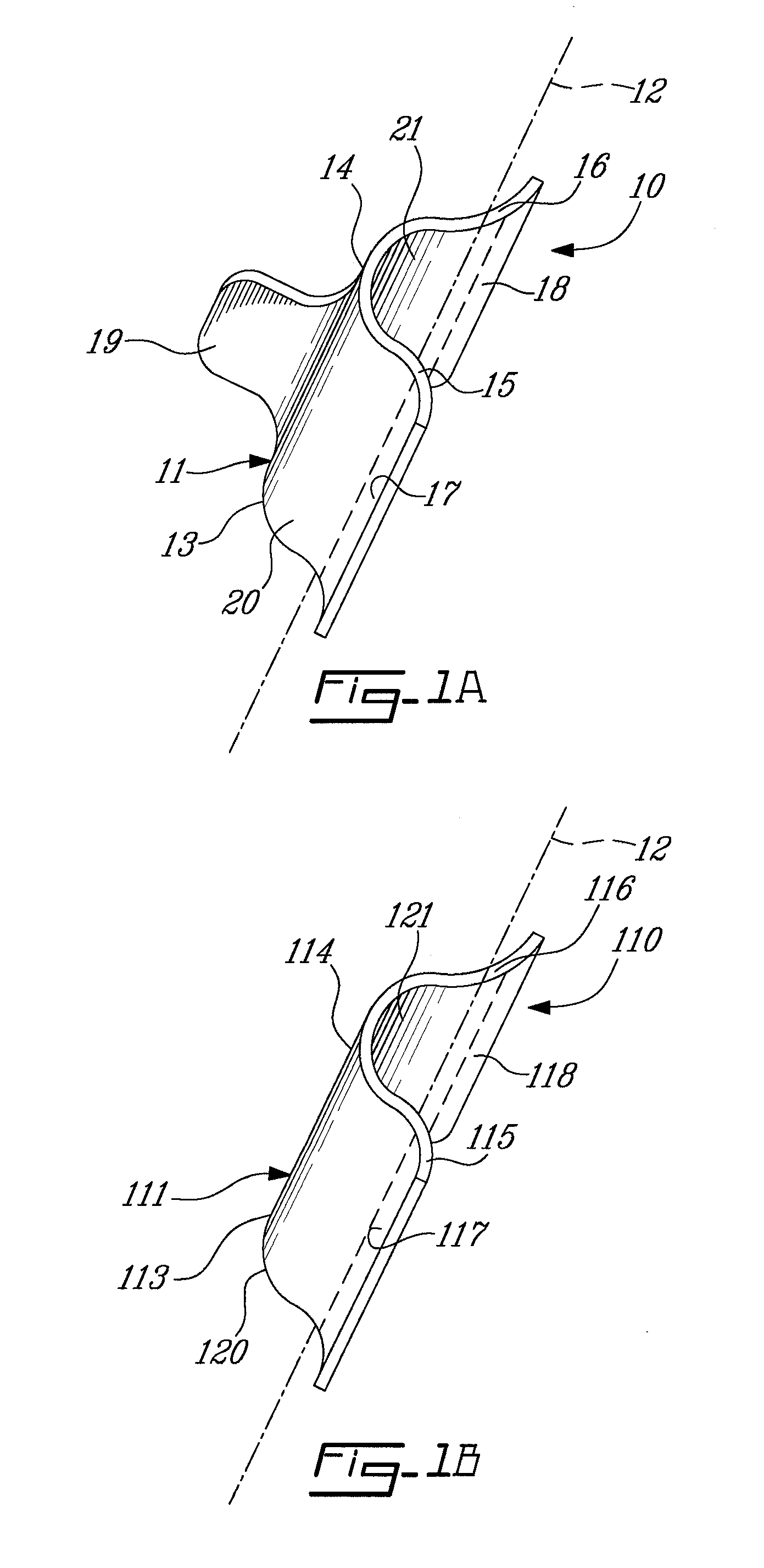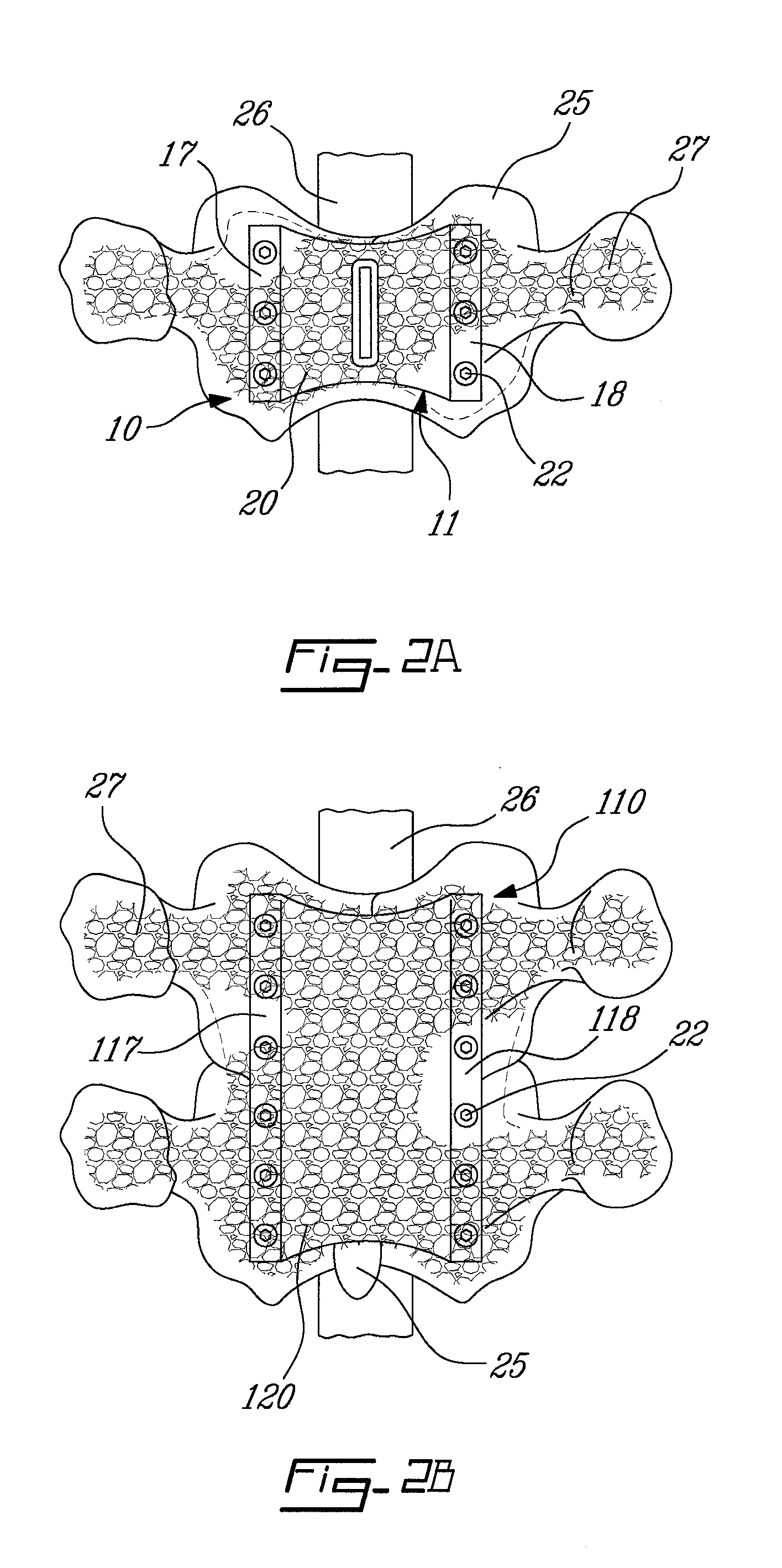Spinal covering device
a covering device and spine technology, applied in the field of spine covering devices, can solve the problems of reduced surface available for fusion, inability to achieve bone healing, and insufficient or insufficient bone healing,
- Summary
- Abstract
- Description
- Claims
- Application Information
AI Technical Summary
Benefits of technology
Problems solved by technology
Method used
Image
Examples
Embodiment Construction
A spinal covering device for covering exposed neural spinal elements after a spinal procedure such as laminectomy, spinal decompression, spinal release, osteotomy and discectomy is described herein. The removal of soft or bony tissues at one or more vertebral levels along the spinal column leaves the neural spinal elements exposed and susceptible to physical trauma. Products such as gelatine foam or fat do not provide a sufficient barrier to prevent potential physical trauma. The spinal covering device advantageously rests on or against remaining soft or bony tissues to minimize the contact between the device and surrounding neural spinal elements by forming a spinal canal portion containing the spinal element. Such reduced contact minimizes adhesion formation between the neural tissues and the device itself.
Referring to FIG. 1a, a spinal covering device 10 according to a particular element of the present invention is shown. More particularly, the device 10 comprises a body 11 prefe...
PUM
 Login to View More
Login to View More Abstract
Description
Claims
Application Information
 Login to View More
Login to View More - R&D
- Intellectual Property
- Life Sciences
- Materials
- Tech Scout
- Unparalleled Data Quality
- Higher Quality Content
- 60% Fewer Hallucinations
Browse by: Latest US Patents, China's latest patents, Technical Efficacy Thesaurus, Application Domain, Technology Topic, Popular Technical Reports.
© 2025 PatSnap. All rights reserved.Legal|Privacy policy|Modern Slavery Act Transparency Statement|Sitemap|About US| Contact US: help@patsnap.com



